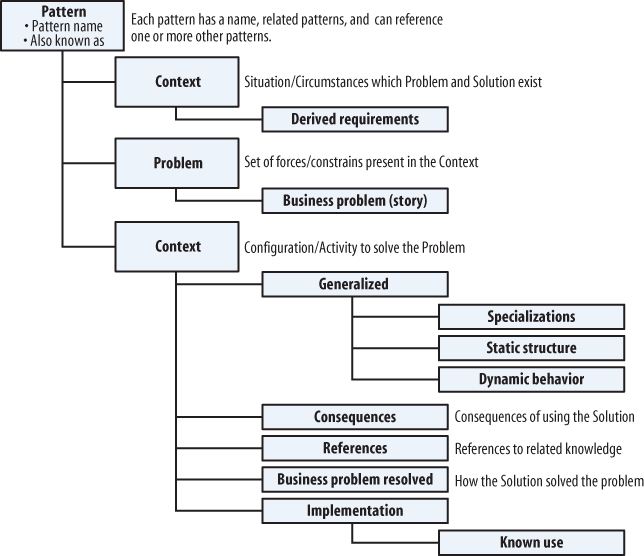The Pattern Presentation Template
Each pattern instance should be composed of the components described in the following subsections and illustrated in Figure 6-4. This patterns metamodel is used for all the patterns presented in Chapter 7, and understanding it will help you digest the content in that chapter.

Figure 6-4. Components of a pattern
Pattern
Each pattern, while composed of a context, problem, and solution, also has some additional attributes that can help identify it and its characteristics to those who might benefit from using the pattern. These attributes include its name, which is unique within the patterns domain (in our example pattern, this would be “Customer Records Management pattern”), and any alternative names or terms that are commonly applied to it. These names and terms are outlined in Also Known As.
A pattern can have as many alsoKnownAs
attribute instances as required. For example, Rich Internet
Applications (RIAs) are also sometimes called Rich User Experiences
(RUEs), and the Asynchronous Particle Update pattern is analogous to
the AJAX and REST architectural styles.
For our present example, we might use some related pattern terms such as Customer Relationship Management (CRM). When listing such terms we’ll often provide a reference for further information; for instance, in this case, we might reference the CRM archetype pattern diagram from Jim Arlow and Ila ...
Get Web 2.0 Architectures now with the O’Reilly learning platform.
O’Reilly members experience books, live events, courses curated by job role, and more from O’Reilly and nearly 200 top publishers.

